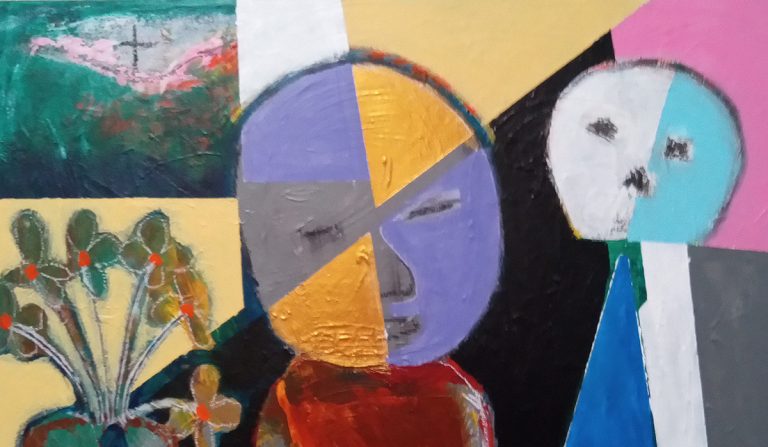Jesse A. Kantu studied and graduated from the University of Houston with a BFA in Sculpture and a Minor in Art History in 2006. His artistic journey has been shaped by his exploration of the common denominators and the brokenness found in humanity’s struggles across cultures. In 2011, Kantu founded Pyramid Art Services, a social arts hub aimed at helping others discover their artistic voice. In May 2015, he furthered his education by obtaining an MFA in Painting from Houston Baptist University. His work often deals with the complexities of human existence, as well as the tension between selfish and selfless behavior. In 2020, he released his first literary publication, EMERGING—New Contemporary Narratives in the 21st Century, exploring the shifting landscapes of contemporary life. Currently living and working in Houston, Kantu continues to challenge societal norms and offer thought-provoking commentary through his art.
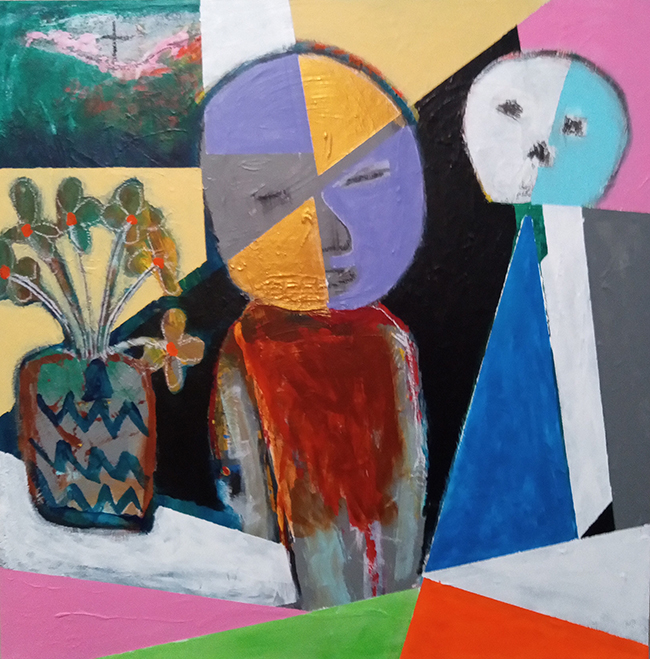
Kantu’s painting The Hourglass (24 x 24 inches, acrylics on canvas) is an introspective work that contemplates time, life, and mortality. In this piece, Kantu places a figure between two contrasting elements: a vase of flowers representing nature and life on the left, and a sculpture of death on the right. The background reveals an image of a cemetery with a cross, reminding us of life’s inevitable conclusion. The composition raises the question of how one navigates the choices made throughout life, both selfish and selfless. The viewer is encouraged to reflect on their position in the world and how they might impact the lives of others. The central message is clear: regardless of one’s circumstances, making a positive difference in the world should be a constant priority. This thought-provoking balance of life and death, of selfishness and selflessness, challenges us to live with intention and purpose.
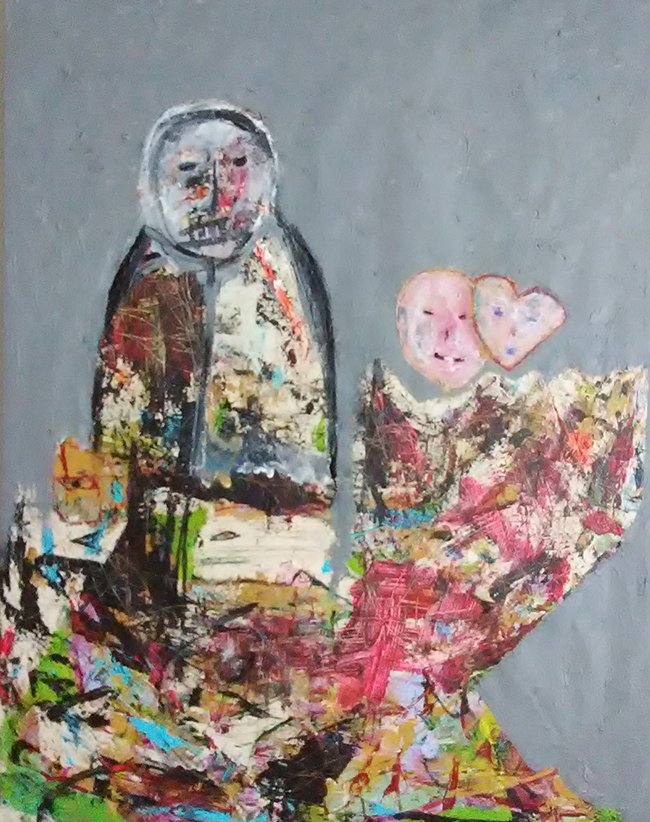
In Leaving You (40 x 30 inches, acrylics on canvas), Kantu explores dysfunction within the family structure. This painting focuses on how one individual can disrupt the unity of a family through jealousy or envy, leading to unproductive and destructive behavior. The central figure, depicted as a monstrous form, encroaches on two smaller shapes: a pink circle and a pink heart, symbolizing siblings. The foundation beneath them has cracked, representing the brokenness of the family dynamic. The siblings are left to find a new path, forced to leave the toxicity behind in order to survive. Kantu’s use of abstraction allows the viewer to feel the emotional weight of familial dysfunction, and the painting’s message is a universal one—sometimes, the only way to move forward is to break free from harmful environments, even if it means leaving loved ones behind.
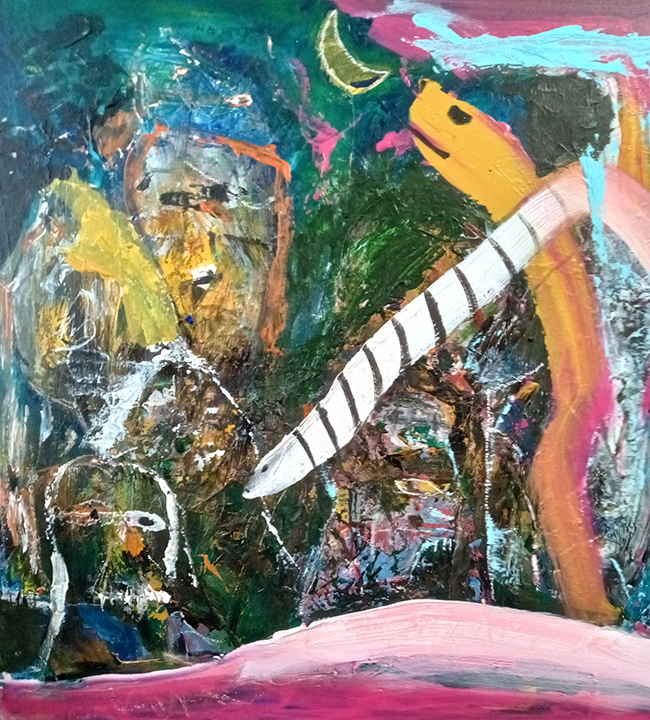
In Kissing the Moon (24 x 24 inches, acrylics on canvas), Kantu tackles the complex issue of human migration in America. This painting reflects the way diverse cultures and ethnicities have transformed American cities. Kantu paints an influx of people on the left, blending into the landscape while displacing the native species, represented by snakes. The imagery evokes questions about how America adapts to the constant arrival of new people seeking asylum, refuge, or better opportunities. At its core, the painting explores the duality of American society, which offers hope and security but also imposes limitations on those who arrive. Kantu raises the question: can America continue to support this influx, or will the weight of these changes prove too great for its economy and spirit? Kissing the Moon asks viewers to reflect on the evolving identity of the United States and its place in the world.
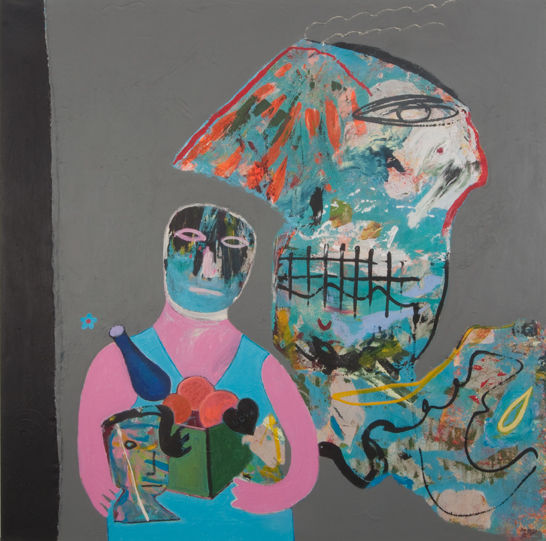
Kantu’s Snake Bitten (48 x 48 inches, acrylics on fabric) delves into the repercussions of poor decision-making. The painting portrays a woman carrying only a few belongings—a box of oranges, a flower vase, a doll, her heart, and a child—as she is kicked out of her home. She is nine months pregnant, but instead of an umbilical cord, she is connected to her embryo by a snake. The snake symbolizes the consequences of her self-centered actions, with a skull and iron gate looming in the background, signifying the obstacles she faces. Despite her situation, the woman seems oblivious to the lives she is bringing into this chaotic world. This work challenges the viewer to consider the ripple effects of individual actions, especially when those actions impact others. Kantu’s imagery is stark, and the message is clear: selfish choices lead to consequences that can trap future generations in cycles of hardship.
In his work, Jesse A. Kantu uses symbolism and narrative to delve into the brokenness of human experience. Whether exploring themes of time, family dynamics, migration, or personal responsibility, his paintings are always rooted in the idea that our actions have lasting effects. His use of acrylics on canvas brings these stories to life in a way that feels both personal and universal, urging viewers to confront the harsh realities of life while also offering a sliver of hope for redemption.

